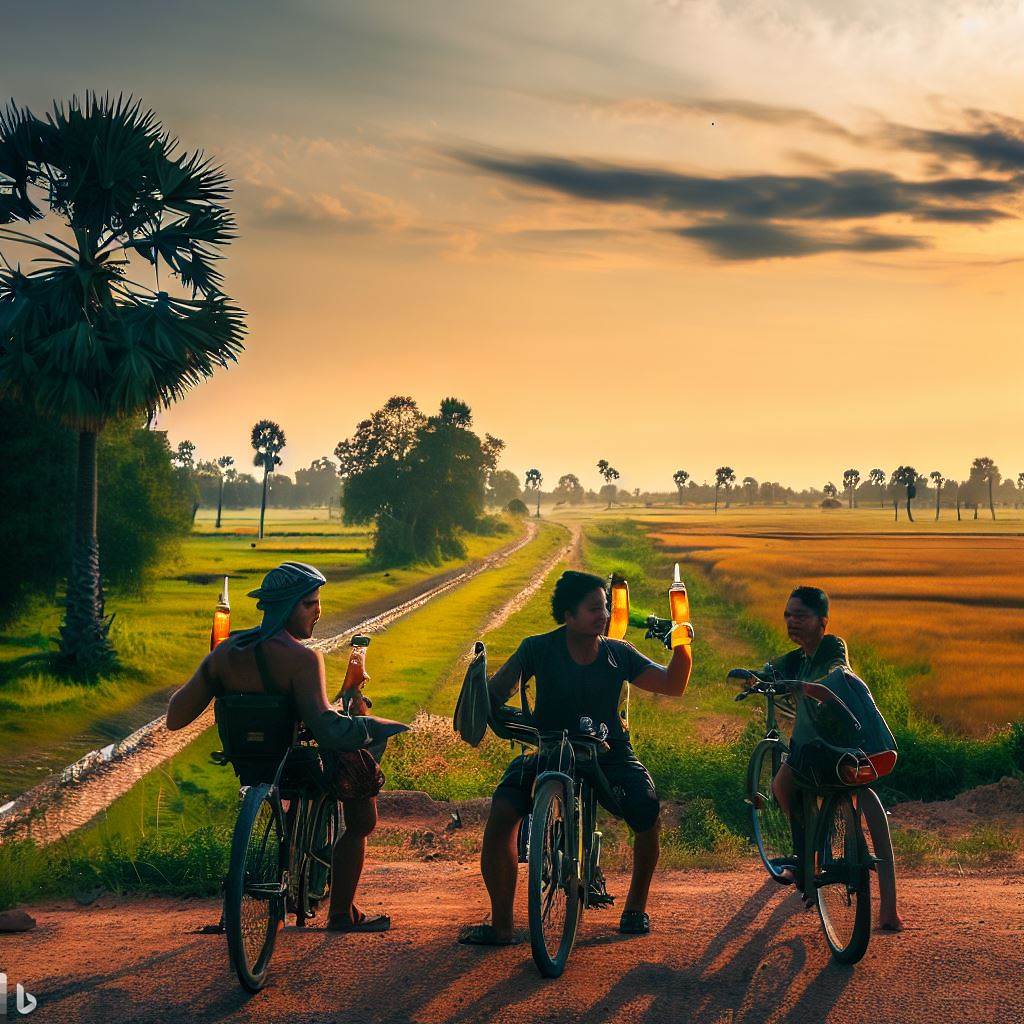The global beer market is as diverse as it is competitive. There are many categories and subcategories, with non-alcoholic beer being one of them. In recent years, non-alcoholic craft beer has seen steady growth in many western markets. However, it hasn’t been able to replicate that success in Southeast Asia. Despite the influx of major brands like Heineken and Budweiser into these markets, the non-alcoholic craft beer segment continues to struggle. This article explores why this is happening.
Beer Culture in Southeast Asia
Traditional Drinking Habits
Southeast Asia, as diverse as it is, has a shared beer culture, with alcohol often being a central part of social interactions. Be it a family gathering, a business meeting, or a casual night out with friends, the presence of alcoholic beverages, especially beer, is typical. Therefore, it’s crucial to understand that beer consumption in this region is not just about quenching thirst, but it also involves aspects of tradition, camaraderie, and even status.
Alcohol is also an important part of doing business in many Asian countries. It is partly used as a way to gauge possible business partners and unfortunately, it makes it almost impossible for the people involved to avoid intoxication. This is unlikely to change, even if introducing non alcoholic beers in these settings could be very lucrative for beer companies. It would need for the attitudes toward alcohol to change because drinking non alcoholic options in these settings could possibly result in loss of face. This is a very important part of many Asian cultures and that is the main reason it will be difficult to introduce non alcoholic beers to this segment.
Market Dominance of Local and International Beers
For a long time, Southeast Asia’s beer market has been dominated by a combination of local lagers, international beers, and spirits. Brands like Tiger, Bintang, Chang, and San Miguel have a massive presence alongside international names like Heineken and Asahi. These brands have effectively shaped the region’s taste for beer, and they continue to dominate market shares, making it challenging for new entrants to establish themselves.
Challenges for Non-Alcoholic Craft Beers in Southeast Asia
Even if the major beer brands still dominate the Southeast Asian beer markets, craft beer has slowly gained acceptance. In some countries, it has partly gained mainstream acceptance while in others it is still struggling to grab market share. Then there is also Brunei which is a totally dry country, as well as the Aceh province of Indonesia.
Non-alcoholic craft beer in Thailand and Vietnam

In Thailand and Vietnam, craft beers are already quite mainstream, and apart from in the major cities, they can be found in provincial cities as well. Vietnam has a long history of small-scale beer brewing so they have adapted craft beer very quickly. They also have very lax laws for craft beer brewers so plenty of craft beer breweries have appeared during the past five years. Notable Vietnamese craft beer brewers are Heart of Darkness, Pasteur Street Brewing Company, and 7 Bridges.
Thailand on the other hand has not been very friendly to their brewers. The two major beer companies, ThaiBev and Boon Rawd Brewery, pretty much have a monopoly in the country and to start a brewery you need to produce about 10 million liters of beer per year. That is something that is unachievable for most Thai craft beer brewers. This has resulted in the brewers brewing in other countries to later import their beers to Thailand. That, combined with already high alcohol taxes, has resulted in Thailand having some of the most expensive craft beers in the world. Having said that, many Thai brewers have started brewing at a brewery called Thai Spirit Industry Ltd which has managed to get a license for brewing.
Are craft beer prices in Southeast Asia an obstacle?
I still don´t think the high alcohol prices actually would stop Thailand from adopting non-alcoholic craft beer. Thailand´s non alcoholic beers would not have to be nearly as expensive as their alcoholic counterparts. They would not have the same alcohol taxes and they could also produce it within the country. While alcoholic craft beer in Thailand is selling for around 300 baht ($10), the price of a non-alcoholic craft beer could be about half of that. That means the price would be quite reasonable. If we put this into relation to other countries, where non-alcoholic beers can be more expensive than alcoholic beers, this might be an interesting take on entering the market.
In Vietnam, craft beer prices are about half of the prices in Thailand. Still, there are no non-alcoholic craft beers in Vietnam which makes me think that it is more about attitudes. People go out to drink beer and that is the focus for most people. Having said that, mocktails have been gaining popularity so it is all about changing the attitudes towards non-alcoholic craft beer. It is understandable that it has not happened yet because craft beer only started gaining traction in Southeast Asia around the years 2015-2017. A first-mover here could have a great advantage.
In the end, the problem might be a reluctance to pay a premium for a premium product that does not contain alcohol. But some people are still drinking expensive mocktails so I do not think it is an impossible sell.
Non-alcoholic craft beer in Cambodia, Laos, and Myanmar
In Cambodia, Laos, and Myanmar, craft beer is still not a big thing. In Cambodia, there are about a dozen brewers while Laos and Myanmar only have a couple of breweries each. If the craft beer scene has not really gotten traction, I don´t think non-alcoholic craft beer could thrive. Major labels like Heineken and Carlsberg, have, however, started selling their non-alcoholic beers in Cambodia. Especially Carlsberg has seen Asia as the next big opportunity in alcohol free beers. These companies obviously believe that there could be a market for non-alcoholic beers in the country. Having said that, NA beers will probably not see steady growth before it has happened in Thailand and Vietnam.
Lack of Awareness and Understanding
There’s a lack of understanding about what non-alcoholic beer is and why someone might choose it over its alcoholic counterpart. Without clear benefits, it can be hard to convince consumers to switch from traditional beer to non-alcoholic options. Many people in Southeast Asia may not even know that non-alcoholic beer exists, let alone understand the appeal of craft variants.

While major brands like Heineken and Carlbserg are introducing their non-alcoholic beers in these markets, their influence is not enough to bring about a significant shift in consumption habits. What I have personally seen in countries like Thailand and Vietnam is that people are more focused on healthy living. This is a trend that is being seen worldwide. People still want to go out but maybe drink less alcohol. That´s why I think there could be a market for non-alcoholic craft beer in Southeast Asia. Even if it would be a small niche market it is better than nothing. I know of sober people in the Southeast Asian craft beer industry and there are probably thousands more I haven´t met. Whether they are sober every now and then or for dry January there are simply many reasons to drink non-alcoholic beer.
I do believe there is a chance for non-alcoholic craft beer to get a foothold in Thailand, Vietnam, and The Philippines. For this to happen, someone needs to step up and increase awareness about these products. They would also have to promote the benefits of NA beers and this could involve educational marketing campaigns, tastings, and partnerships with health-conscious brands or influencers.
Furthermore, brewers could seek to collaborate with local brands to create non-alcoholic craft beers that incorporate local flavors. This could appeal to local palates while adding a unique selling proposition that sets these products apart.
While the road for non-alcoholic beers in Southeast Asia may be challenging, it is not impassable. With targeted marketing and consumer education there is potential for these products to make their mark. However, it will require a deep understanding of the market and consumer behavior, combined with innovative strategies and persistence.
